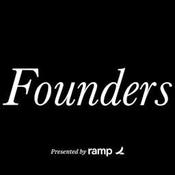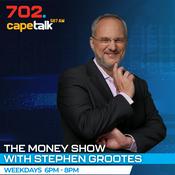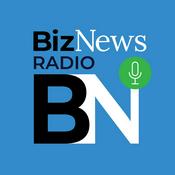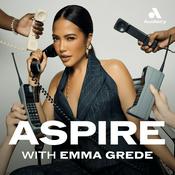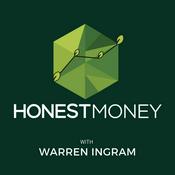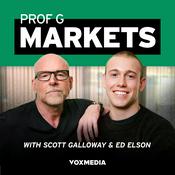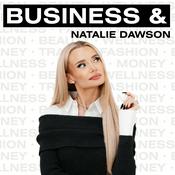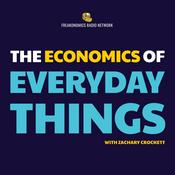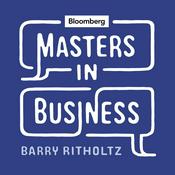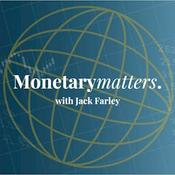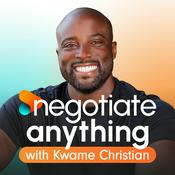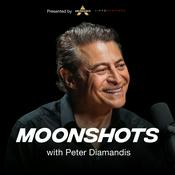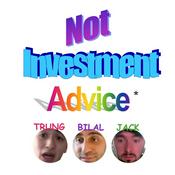1527 episodes

How Will Credit Markets Fare in 2026?
2025/12/19 | 8 mins.
To conclude their two-part discussion, our Head of Corporate Credit Research Andrew Sheets and Chief Investment Officer for Morgan Stanley Wealth Management Lisa Shalett discuss the outlook for inflation and monetary policy, with implications for investment-grade credit.Read more insights from Morgan Stanley.----- Transcript -----Andrew Sheets: Welcome to Thoughts on the Market. I'm Andrew Sheets, Global Head of Corporate Credit Research at Morgan Stanley.Lisa Shalett: And I am Lisa Shalett, Chief Investment Officer of Morgan Stanley Wealth Management.Andrew Sheets: Yesterday we focused on the topic of a higher for longer inflation regime, and I was asking the questions. Today, Lisa will grill me on my views for the next year. It's Friday, December 19th at 4pm in London. Lisa Shalett: And it's 11am in New York. All right, Andrew, I'm happy to turn tables on you now. I'm very interested in your thoughts about the past year – 2025 – and looking towards 2026. In 2026, Morgan Stanley Research seems to expect a resilient global growth backdrop, with inflation moderating and central banks easing policy gradually. What do you think are the main drivers behind this more constructive inflation outlook, especially taking into account the market's prevailing concerns about persistent price pressures. Andrew Sheets: There are a couple of factors that we think are going to be near term helps for inflation, although I don't think they totally rule out what you're talking about over that longer term period.So first, we, at Morgan Stanley, are very cautious, very negative on oil prices. We think that there's going to be more supply of oil over the next year than demand for it. And so lower oil prices should help bring inflation down. There's also some measures of just how the inflation indices measure shelter and housing. And so, while we think, kind of, looking further ahead, there are some real shortages emerging in things like the rental markets – where you just haven't had a whole lot of new rental construction coming online, as you look out a year or two ahead. But in the near term, rental markets have been softer. Home prices are coming down with a lag in the data. And so, shelter inflation is relatively soft. So, we think that helps. While at the same time fiscal policy is very supportive and corporates, as we discussed in our last conversation, they're really embracing animal spirits – with more spending, more spending on AI, more capital investment generally, more M&A. And so, those factors together, we think, can over the next 12 months, still mean pretty reasonable growth and Inflation that's still above target – but at least trending a little bit lower. Lisa Shalett: You believe that central banks, including the Fed, will cut rates more slowly given better growth. And this slower pace of easing could actually be positive for the credit markets. So, could you elaborate on your expertise on credit and why a gradual Fed approach may be preferable? What risks and opportunities might this create? Andrew Sheets: Yeah, so I think this is kind of one of these big debates going into this year is – which would we rather have? Would we rather have a Fed that was more active, cutting more aggressively? Or cutting more slowly? And, indeed, we're having this conversation on the heels of a Fed meeting. There's a lot of uncertainty about that path. But the way that we're thinking about it is that the biggest risk to credit would be that this outlook for growth that we have is just too optimistic. That actually growth is weaker than expected. That this rise in the unemployment rate is signaling something far more challenging for the economy ahead and in that scenario the Fed would be justified in cutting a lot more. But I think historically in those periods where growth has deteriorated more significantly while the Fed has been cutting more, those have been periods where credit – and indeed the equity market – have actually done poorly despite more quote unquote Fed assistance. So, periods where the Fed is cutting more gradually tend to be more consistent with policy in the right place. The economy being in an okay place. And so, we think, that that's the better outcome. So again, we have to kind of monitor the situation. But a scenario where the Fed ends up doing a little bit less than the market, or even we expect with rate cuts – because the economy's holding up. That can still be, we think, an okay scenario for markets. Lisa Shalett: So, things are okay and animal spirits are returning. What does that mean for credit markets? Andrew Sheets: Yeah, so I think this is the bigger challenge: is that if our growth scenario holds up, corporates I think have a lot of incentives to start taking more risk – in a way that could be good for stock markets, but a lot more challenging to the lenders, to these companies for credit. Corporates have been impressively restrained over the last several years. They've really, kind of, held back despite lots of fiscal easing, despite very low rates. Those reasons for waiting are falling away. And so, in this backdrop that you, Lisa, were describing the other day around – easier monetary policy, easier fiscal policy, easy regulatory policy, and you know, just for good measure, maybe the biggest capital spending cycle since the railroads through AI. These are some pretty powerful forces of animal spirits. And that's a reason why we think ultimately, we see a lot more issuance. We see roughly a trillion dollars of net supply. So, total supply, less redemptions in U.S. investment grade. That's a huge uptick from this year, and we think that drives spreads wider, even if my colleague Mike Wilson is correct that equity markets rise. Lisa Shalett: So, wow. So, we have very strong U.S. equities. But perhaps an investment grade credit market that underperforms those equities. How else would you think about your asset allocation more broadly, and how might those dynamics around credit issuance and equity success play out regionally? Andrew Sheets: Yeah, so, I think this scenario where equities are up, credit is underperforming. The cycle is getting more aggressive. It's a little unusual, but I think we do have some templates for it and specifically I think investors could look to 2005 or 1997 and 1998. Those were all years where equities were up double digits, where credit spreads were wider. Where yields were somewhat range bound, where corporate aggression was increasing. That is all very consistent with Morgan Stanley's 2026 story. And yet, you did have this divergence between equities and credit market. So, I think it is a market where we see better risk-reward in stocks than in credit. I think it's a market where we want to be in somewhat smaller credits or somewhat smaller equities. We like small and mid cap stocks in the U.S. over large caps. We like high yield over investment grade. And we do think that European credit might outperform as it's somewhat lagging this animal spirits theme that we think will be led by the U.S. Lisa Shalett: So, if that's the outlook, what are the risks? Andrew Sheets: Yeah, so I think there are two risks, and you know, we alluded to one of them early on in this conversation – would be just that growth is weaker than we expect. Usually when the unemployment rate is rising, that's a pretty bad time to be in credit. The unemployment rate is rising. Now, Morgan Stanley economists think that that rise will be temporary, that it will reverse as we go through 2026. And so, it'll be less of a thing to worry about. But you know, a sign that maybe companies have been holding off on firing, waiting for more tariff clarity, if that doesn't come, then that would be a risk to growth. The other risk to growth is just around this AI-related spending. It is very large and the companies that are doing it are some of the wealthiest companies in the world, and they see this spending potentially as really core to their long-term strategic thinking. And so, if you were to ever have an issuer or a set of issuers who were just less price sensitive, who would keep issuing into the market, even if it was starting to reprice that market and push spreads wider, this might be the group. And so, a scenario where that spending is even larger than we expect, and those issuers are less price sensitive than we expect – that could also drive spreads wider, even if the underlying economic backdrop is somewhat okay. Lisa Shalett: Super. That's probably a great place for us to wrap up. So, I'll hand it back to you, Andrew. Andrew Sheets: Well, great, Lisa, always a pleasure to have this conversation. And, as a reminder for all you listening, if you enjoy Thoughts of the Market, please take a moment to rate and review us wherever you listen, it helps more people find the show. *****Lisa Shalett is a member of Morgan Stanley's Wealth Management Division and is not a member of Morgan Stanley’s Research Department. Unless otherwise indicated, her views are her own and may differ from the views of the Morgan Stanley Research Department and from the views of others within Morgan Stanley.

How to Navigate a High Inflation Regime
2025/12/18 | 11 mins.
Our Head of Corporate Research Andrew Sheets and Chief Investment Officer for Morgan Stanley Wealth Management Lisa Shalett unpack what’s fueling persistent U.S. inflation and how investors could adjust their portfolios to this new landscape.Read more insights from Morgan Stanley.----- Transcript -----Andrew Sheets: Welcome to Thoughts on the Market. I'm Andrew Sheets, Head of Corporate Credit Research at Morgan Stanley. Lisa Shalett: And I'm Lisa Shalett, Chief Investment Officer for Morgan Stanley Wealth Management. Andrew Sheets: Today, is inflation really transitory or are we entering a new era where higher prices are the norm? Andrew Sheets: It's Thursday, December 18th at 4pm in London. Lisa Shalett: And it's 11am in New York. Andrew Sheets: Lisa, it's great to talk to you again. And, you know, we're having this conversation in the aftermath of, kind of, an unusual dynamic in markets when it comes to inflation. Because inflation is still hovering around 3 percent. That's well above the Federal Reserve’s 2 percent target. And yet the Federal Reserve recently lowered interest rates again. Fiscal policy remains very stimulative, and I think there's this real question around whether inflation will moderate? Or whether we're going to see inflation be higher for longer. And you know, you are out with a new report touching on some of the issues behind this and why this might be a structural shift higher in inflation. So, we'd love to get your thoughts on that, and we'll drill down into the various drivers as this conversation goes on. Lisa Shalett: Thanks Andrew. And look, I think as we take a step back, and the reason we're calling this a regime change is because we see factors for inflation coming from both the demand side and the supply side. For example, on the demand side, the role of the infrastructure boom, the GenAI infrastructure boom, has become global. It has caused material appreciation of many commodities in 2025. We're seeing it obviously in some of the dynamics around precious metals. But we're also seeing it in industrial metals. Things like copper, things like nickel. We're also seeing demand factors that may stem from the K-shaped economy. And the K-shaped economy, as we know, is really about this idea that the wealthiest folks are increasingly dominating consumption. And they are getting wealthy through financial asset inflation. On the supply side, there are dynamics like immigration, dynamics around the housing market that we can talk about. But perhaps the wrapper around all of it is how policy is shifting – because increasingly policymakers are being constrained by very high levels of debt and deficits. And determining how to fund those debts and deficits actually removes some of the degrees of freedom that central bankers may have when it comes to actually using interest rates to constrain demand. Andrew Sheets: Well, Lisa, this is such a great point because we're financial analysts. We're not political analysts. But it seems safe to say that voters really don't like inflation. But they also don't like some of the policies that would traditionally be assigned to fight inflation – be they higher interest rates or tighter fiscal policy. And even some of the more recent political shifts that we've seen – I’m talking about the U.S. around, say, immigration policy could arguably be further tightening of that supply side of the economy – measures designed to raise wages, almost explicitly in their policy goals. So how do you see that dynamic? And, again, kind of where does that leave, you think, policy going forward? Lisa Shalett: Yeah. I think the very short answer – our best guess is that policy becomes constrained. So, on the monetary side, we're already seeing the Fed beginning to signal that perhaps they're going to rely on other tools in the toolkit. And what are those tools in the toolkit? Well, they're managing the size of their balance sheet, managing the duration or the mix of things that they hold in the balance sheet. And it's actual, you know, returns to how they think about reserve management in the banking system. All of those things, all of those constraints may enable the U.S. government to fund debts, right? By buying the Treasury bill issuance, which is, you know, swollen to almost [$]2 trillion a year in terms of U.S. deficits. But on the fiscal side, right, the interest payments on debt, begins to crowd out other government spending. So, policy itself in this era of fiscal dominance becomes constrained – both in, you know, Washington, D.C. and from Congress – what they can do, their degrees of freedom – and what the central bank can do to actually control inflation. Andrew Sheets: Another area that you touch on in your report is energy and technology, which are obviously related with this large boom that we're seeing – and continue to expect in AI data center construction. This is a lot of spending on the technology. This is a lot of power needed to power that technology and U.S. data center electricity demand is growing at a rapid rate. And transmission constraints are causing prices to go up. A price that is a pretty visible price for a lot of people when they get their utility bill. So, how do these factors you think shape the story? And where do you think they're going to go as we look into the future? Lisa Shalett: Yeah, 100 percent. I mean, I think, you know, when we talk about, you know, who's going to dominate in Generative AI globally, one of the factors that we have to take into consideration is what is the cost of power? What is the cost of electricity? What is the age of the infrastructure to both generate that electricity and transport it? And transmit it? This is one of the areas where the U.S., at the minute, is facing genuine constraints. When you think about some of the forecasts that have been put out there in terms of $10 trillion of spending related to Generative AI, the number of data centers that are going to be built, and the power shortfall that has been forecast. We're talking about someone having to pay the price, if you will, to ration power until you can upgrade the grid. And in the U.S., that grid upgrade, to be blunt, has lagged some of the rest of the world. Not only because the rest of the world was slower to modernize and leapfrogged in many ways. But we know in China, for example, they have one of the lowest electricity generation costs on the planet. That is an advantage for them. So, we have to consider that power generation writ large is potentially a force for upward inflation, at least in the short term. Andrew Sheets: So we have the fiscal policy backdrop. We have an AI spending backdrop both contributing to the demand side of inflation. We have these supply constraints, whether it's housing or labor also, you know, potentially being more structural drivers of higher inflation. The question I'm sure that investors are asking you is, what should they do about it? So, can you walk us through the key strategies that investors might want to consider as they navigate a new inflationary regime? Lisa Shalett: Sure. So, the first thing that we think it's really important for folks to appreciate is that typically when we've been in these higher inflation regimes in the past, stocks and bonds become positively correlated. And what that means is that the power of a very simple 60-40 or stock-bond-cash portfolio to provide complete or optimal diversification fades. And it requires investors to potentially consider investing, especially beyond fixed income. Stocks very often are pro-inflationary assets; meaning many, many companies have the power to pass through price increases. If you are consuming income from a fixed income or a bond instrument, inflation is your enemy, right? Because it's eating into your real returns. And so, one of the things that we're talking with our clients a lot about in terms of portfolio construction are things like adding real assets, adding infrastructure assets, adding energy, transportation assets, adding commodities. Adding gold even, to a certain extent. You know, there may be cryptocurrencies that have lower correlations to their portfolios. Andrew Sheets: Just to play devil's advocate, you can imagine that some investors might say, ‘Well, I can look in the market at long-term inflation expectations.’ And those long-term inflation expectations have been kind of stable and a bit above the Fed's target. But not dramatically. So, what do you say to that? And what do you think those markets either might be missing? Or how could investors leverage that more benign view that's out there in the market? Lisa Shalett: Yeah, so look, I think here's where the debate, right? Our perception has been that inflation expectations have remained extraordinarily anchored – because investors have actually reasonably short memories on the one hand, and we have, by and large, been in disinflationary times. Second, there's extraordinary faith in policy makers – that policy makers will fight inflation. And I think the third thing is that there's extraordinary faith in the deflationary forces of technology. Now, all three of those things may absolutely, positively be true. The problem that we have is that the alternate case, right? The case that we’re making – that maybe we’re in a new inflationary regime is not priced, and the risk is non-zero. And so, what we see, and what we’re watching is – how steep does the yield curve get, right? As we look at yields in the 10-30-year tenure – what is driving those rates higher? Is it a generic term premium? Or are we starting to see an unanchoring, if you will, of inflation expectations. And it takes a while for people to appreciate regime change. And so, look, as is always the case, there’s no absolutes in the market. There’s no one theory that is priced and the other theory is not. But sometimes you want to hedge, and we think that we're going through a period where diversified portfolios and hedging for these alternative outcomes -- because there are such powerful structural crosscurrents – is the preferred path. Andrew Sheets: Lisa, thanks for sharing your insights Lisa Shalett: Of course, Andrew. That's my pleasure. Andrew Sheets: As a reminder, if you enjoy Thoughts on the Market, please take a moment to rate and review us, wherever you listen. It helps more people find the show.*****Lisa Shalett is a member of Morgan Stanley's Wealth Management Division and is not a member of Morgan Stanley’s Research Department. Unless otherwise indicated, her views are her own and may differ from the views of the Morgan Stanley Research Department and from the views of others within Morgan Stanley.

U.S. Policy Breaks Past Peak Uncertainty
2025/12/17 | 10 mins.
Our Public Policy Strategists Michael Zezas and Ariana Salvatore break down key moves from the White House, U.S. Congress and Supreme Court that could influence markets 2026.Read more insights from Morgan Stanley.----- Transcript -----Michael Zezas: Welcome to Thoughts on the Market. I'm Michael Zezas, Global Head of Fixed Income Research and Public Policy Strategy.Ariana Salvatore: And I'm Ariana Salvatore, U.S. Public Policy Strategist.Michael Zezas: Today we'll be talking about the outlook for U.S. public policy and its interaction with markets into 2026.It's Wednesday, December 17th at 10:30am in New York.So, Ariana, we published our year ahead outlook last month. And since then, you've been out there talking to clients about U.S. public policy, its interaction with markets, and how that plays into 2026. What sorts of topics are on investors' minds around this theme?Ariana Salvatore: So, the first thing I'd say is clients are definitely interested in our more bullish outlook, in particular for the U.S. equity market. And normally we would start these conversations by talking through the policy variables, right? Immigration, deregulation, fiscal, and trade policy. But I think now we're actually post peak uncertainty for those variables, and we're talking through how the policy choices that have been made interact with the outlook.So, in particular for the equity market, we do think that some of the upside actually is pretty isolated from the fact that we're post peak uncertainty on tariffs, for example. Consumer discretionary – the double upgrade that our strategists made in the outlook has very little to do with the policy backdrop, and more to do with fundamentals, and things like AI and the dollar tailwind and all of all those factors.So, I think that that's a key difference. I would say it's more about the implementation of these policy decisions rather than which direction is the policy going to go in.Michael Zezas: Picking up on that point about policy uncertainty, when we were having this conversation a year ago, right after the election, looking into 2025, the key policy variables that we were going to care about – trade, fiscal policy regulation – there was a really wide range of plausible outcomes there.With tariffs, for example, you could make a credible argument that they weren't going to increase at all. But you could also make a credible argument that the average effective tariff rate was going to go up to 50 or 60 percent. While the tariff story certainly isn't over going into 2026, it certainly feels like we've landed in a place that's more range bound. It's an average effective tariff rate that's four to five times higher than where we started the year, but not nearly as high as some of the projections would have. There's still some negotiation that's going on between the U.S. and China and ways in which that could temporarily escalate; and with some other geographies as well. But we think the equilibrium rate is roughly around where we're at right now.Fiscal policy is another area where the projections were that we were going to have anything from a very substantial deficit expansion. Tax cuts that wouldn't be offset in any meaningful way by spending cuts; to a fiscal contraction, which was going to be more focused on heavier spending cuts that would've more than offset any tax cuts. We landed somewhere in between. It seems like there's some modest stimulus in the pipe for next year. But again, that is baked. We don't expect Congress to do much more there.And in terms of regulation, listen, this is a little bit more difficult, but regulatory policy tends to move slowly. It's a bureaucratic process. We thought that some of it would start last year, but it would be in process and potentially hit next year and the year after. And that's kind of where we are.So, we more or less know how these variables have become something closer to constants, and to your point, Ariana now it's about observing how economic actors, companies, consumers react to those policy choices. And what that means for the economy next year.All that said, there's always the possibility that we could be wrong. So, going back to tariffs for a minute, what are you looking at that could change or influence trade policy in a way that investors either might not expect or just have to account for in a new way?Ariana Salvatore: So, I would say the clearest catalyst is the impending decision from the Supreme Court on the legality of the IEEPA tariffs. I think on that front, there are really two things to watch. The first is what President Trump does in response. Right now, there's an expectation that he will just replace the tariffs with other existing authorities, which I think probably should still be our base case. There's obviously a growing possibility, we think, that he actually takes a lighter touch on tariffs, given the concerns around affordability. And then the second thing I would say is on the refunds piece. So, if the Supreme Court does, in fact, say that the Treasury has to pay back the tariff revenue that it's collected, we've investigated some different scenarios what that could look like. In short, we think it's going to be dragged out over a long time period, probably six months at a minimum. And a lot of this will come down to the implementation and what specifically Treasury and CBP, its Customs and Border Protection, sets up to get that money back out to companies.The second catalyst on the trade front is really the USMCA review. So, this is an important topic because it matters a lot for the nearshoring narrative, for the trade relationship that the U.S. has with Mexico and Canada. And there are a number of sectors that come into scope. Obviously, Autos is the clearest impact.So, that's something that's going to happen by the middle of next year. But early in January, the USTR has to give his evaluation of the effectiveness of the USMCA to Congress. I think at that point we're going to start to see headlines. We're going to go start to see lawmakers engage more publicly with this topic. And again, a lot at stake in terms of North American supply chains. So that's going to be a really interesting development to keep an eye on next year too.Michael Zezas: So, what about things that Congress might do? Recently the President and Democrats have been talking about the concept of affordability in the wake of some of the off-cycle elections, where that appeared to influence voter behavior and give Democrats an advantage. So are there policies, any legislative policies in particular, that might come to the forefront that might impact how consumers behave?Ariana Salvatore: So a really important starting point here is just on the process itself, right? So, as we've said, one of the more reliable historical priors is that it's difficult to legislate during election years. That's a function of the fact that lawmakers just aren't in D.C. as often. You also have limited availabilities in terms of procedure itself because Republicans would have to probably do another Reconciliation Bill unless you get some bipartisan support.But hitting on this topic of affordability, there really are a few different things on the table right now. Obviously, the President has spoken about these tariff dividend checks, the $2,000. They've spoken about making changes on housing policy, so housing deregulation, and then the third is on these expanded ACA subsidies.Those were obviously the crux of the government shutdown debate. And for a variety of reasons, I think each of these are really challenging to see moving over the finish line in the coming months. We think that you would need to see some sort of exogenous economic downturn, which is not currently in our economists’ baseline forecast, to really get that kind of more reactive fiscal policy.And because of those procedural constraints, I would just go back to the point we were saying earlier around tariff policy and maybe the Supreme Court decision, giving Trump this opportunity to pull back a little bit. It's really the easiest and most available policy lever he has to address affordability. And to that point, the administration has already taken steps in this direction. They provided a number of exemptions on agricultural products and said they weren't going to move forward with the Section 232 tariffs on semiconductors in the very near term. So, we're already seeing directionally, I would say, movement in this area.Michael Zezas: Yeah. And I think we should also keep our eye on potential legislation around energy exploration. This is something that in the past has had bipartisan support loosening up regulations around that, and it's something that also ties into the theme of developing AI as a national imperative. That being said, it's not in our base case because Democrats and Republicans might agree on the high points of loosening up regulations for energy exploration. But there's a lot of disagreements on the details below the surface.But there's also the midterm elections next year. So, how do you think investors should be thinking about that – as a major catalyst for policy change? Or is it more of the same: It's an interesting story that we should track, but ultimately not that consequential.Ariana Salvatore: So obviously we're still a year out. A lot can change. But obviously we're keeping an eye on polling and that sort of data that's coming in daily at this point. The historical precedent will tell you that the President's party almost always loses seats in a midterm election. And in the House with a three-seat majority for Republicans, the bar's actually pretty low for Democrats to shift control back. In the Senate, the map is a little bit different. But let's say you were to get something like a split Congress, we think the policy ramifications there are actually quite limited. If you get a divided government, you basically get fiscal gridlock. So, limits to fiscal expansion, absent like a recession or something like that – that we don't expect at the moment. But you really will probably see legislation only in areas that have bipartisan support.In the meantime, I think you could also expect to see more kind of political fights around things like appropriations, funding the government, the debt ceiling that's typical of divided governments, unless you have some area of bipartisan support, like I said. Maybe we see something on healthcare, crypto policy, AI policy, industrial policy is becoming more of the mainstream in both parties, so potentially some action there.But I think that's probably the limit of the most consequential policy items we should be looking out for.Michael Zezas: Right, so the way I've been thinking about it is: No clear new policies that someone has to account for coming out of the midterms. However, we definitely have to pay attention. There could be some soft signals there about political preferences and resulting policy preferences that might become live a couple years down the line after we get into the 2028 general elections – and the new power configuration that could result from that.So – interesting, impactful, not clear that there'll be fundamental catalysts. And probably along the way we should pay attention because markets will discount all sorts of potential outcomes. And it could get the wrong way on interpreting midterm outcomes, which could present opportunities. So, we'll certainly be tracking that throughout 2026.Ariana Salvatore: Yeah. And if you think about the policy items that President Trump has leaned on most heavily this year and that have mattered for markets, there are things in the executive branch, right? So, tariff policy obviously does not depend on Congress. Deregulation helps if you have fundamental backing from Congress but can occur through the executive agencies. So, to your point, less to watch out for in terms of how it will shift Trump's behavior.Michael Zezas: Well, Ariana, thanks for taking the time to talk.Ariana Salvatore: Always great speaking with you, Michael.Michael Zezas: And to our audience, thanks for listening. If you enjoy thoughts on the Market, please leave us a review and tell your friends about the podcast. We want everyone to listen.

Where Investors Agree—or Don’t—With Our 2026 Outlook
2025/12/16 | 5 mins.
Our Chief Fixed Income Strategist Vishy Tirupattur responds to some of the feedback from clients on Morgan Stanley’s 2026 global outlooks.Read more insights from Morgan Stanley.----- Transcript -----Vishy Tirupattur: Welcome to Thoughts on the Market. I am Vishy Tirupattur, Morgan Stanley’s Chief Fixed Income Strategist. Today, I consider the pushback we've received on our 2026 outlooks – distilling the themes that drew the most debate and our responses to the debates. It’s Tuesday, Dec 16th at 3:30pm in New York. It's been a few weeks [since] we published our 2026 outlooks for the global economy and markets. We’ve had lots of wide-ranging conversations, much dialogue and debate with our clients across the globe on the key themes that we laid out in our outlook. Feedback has ranged from strong alignment to pointed disagreement, with many nuanced views in between. We welcome this dialogue, especially the pushback, as it forces us to re-examine our assumptions and refine our thinking. Our constructive stance on AI and data center-related CapEx, along with the pivotal role we see for the credit market channels, drew notable scrutiny. Our 2026 CapEx projections was anchored by a strong conviction – that demand for compute will far outstrip the supply over the next several years. We remain confident that credit markets across unsecured, structured, and securitized instruments in both public and private domains will be central to the financing of the next wave of AI-driven investments. The crucial point here is that we think this spending will be relatively insensitive to the macro conditions, i.e., the level of interest rates and economic growth. Regarding the level of AI investment, we received a bit of pushback on our economics forecast: Why don’t we forecast even more growth from AI CapEx? From our perspective, that is going to be a multi-year process, so the growth implications also extend over time. Our U.S. credit strategists’ forecast for IG bond supply – $2.25 trillion in gross issuance; that’s up 25 percent year-over-year, or $1 trillion in net issuance; that’s 60 percent year-over-year – garnered significant attention. There was some pushback to the volume of the issuance we project. As CapEx growth outpaces revenue and pressures free cash flow, credit becomes a key financing bridge. Importantly, AI is not the sole driver of the surge that we forecast. A pick-up in M&A activity and the resulting increase in acquisition-driven IG supply also will play a key role, in our view. We also received pushback on our expectation for modest widening in credit spreads, roughly 15 basis points in investment grade, which we still think will remain near the low end of the historical ranges despite this massive surge in supply. Some clients argued for more widening, but we note that the bulk of the AI-related issuance will come from high-quality – you know AAA-AA rated issuers – which are currently underrepresented in credit markets relative to their equity market weight. Additionally, continued policy easing – two more rate cuts – modest economic re-acceleration, and persistent demand from yield-focused buyers should help to anchor the spreads. Our macro strategists’ framing of 2026 as a transition year for global rates – from synchronized tightening to asynchronous normalization as central banks approach equilibrium – was broadly well received, as was their call for government bond yields to remain broadly range-bound. However, their view that markets will price in a dovish tilt to Fed policy sparked considerable debate. While there was broad agreement on the outlook for yield curve steepening, the nature of that steepening – bull steepening or bear steepening – remained a point of contention. Outside the U.S., the biggest pushback was to the call on the ECB cutting rates two more times in 2026. Our economists disagreed with President Lagarde – that the disinflationary process has ended. Even with moderate continued euro area growth on German fiscal expansion, but consolidation elsewhere, we still see an output gap that will eventually lead inflation to undershoot the ECB’s 2 percent target. We also engaged in lively dialogue and debate on China. The key debate here comes down to a micro versus macro story. Put differently, the market is not the economy and the economy is not the market. Sentiment on investments in China has turned around this year, and our strategists are on board with that view. However, from an economics point of view, we see deflation continuing and fiscal policy from Beijing as a bit too modest to spark near-term reflation. Thanks for listening. If you enjoy the show, please leave us a review wherever you listen and share Thoughts on the Market with a friend or colleague today.

Why Market Stability Matters to the Fed
2025/12/15 | 4 mins.
Our CIO and Chief U.S. Equity Strategist Mike Wilson explains the significance of the Fed’s decision to resume buying $40 billion of Treasury bills monthly. Read more insights from Morgan Stanley.----- Transcript -----Welcome to Thoughts on the Market. I'm Mike Wilson, Morgan Stanley’s CIO and Chief U.S. Equity Strategist.Today on the podcast I’ll be discussing the Fed’s decision last week and what it means for stocks.It's Monday, December 15th at 11:30am in New York. So, let’s get after it.Last week's Fed meeting provided incremental support for our positive 2026 outlook on equities. The Fed delivered on its expected hawkish rate cut but also indicated it would do more if the labor market continues to soften. More important than the rate cut was the Fed's decision to restart asset purchases. More specifically, the Fed intends to immediately begin buying $40 billion of T-Bills per month to ensure the smooth operation of financial markets. Based on our conversations with investors prior to the announcement, this amount and timing of bill buying exceeded both consensus, and my own expectations. It also confirms a key insight I have been discussing for months and highlighted in our Year Ahead Outlook. First, the Fed is not independent of markets, and market stability often plays a dominant role in Fed policy beyond the stated dual mandate of full employment and price stability.Second, given the size of the debt and deficit, the Fed has an additional responsibility to assist Treasury in funding the government, and will likely continue to work more closely with Treasury in this regard.Finally, the decision to intervene in funding markets sooner and more aggressively than expected may not be ‘Quantitative Easing’ as defined by the Fed. However, it is a form of debt monetization that directly helps to reduce the crowding out from the still growing Treasury issuance, especially as Treasury issues more Bills over Bonds.At the Fed's October meeting, it indicated some concern about tightening liquidity which I have discussed on this podcast as the single biggest risk to the bull market in stocks. Evidence of this tightness can be seen in the performance of asset prices most sensitive to liquidity, including crypto currencies and profitless growth stocks.While the Fed probably isn't too concerned about the performance of these asset classes, it does care about financial stability in the bond, credit and funding markets. This is what likely prompted it to restart asset purchases sooner and in a more significant way than most expected.We view this as a form of debt monetization as I mentioned, given the Treasury's objective to issue more bills going forward. More importantly, these purchases provide additional liquidity for markets, and in combination with rate cuts, suggest the Fed is likely less worried about missing its inflation target. This is very much in line with our run it hot thesis dating back to early 2021. As a reminder, accelerating inflation is positive for asset prices as long as it doesn’t force the Fed’s hand to take the punch bowl away like in 2022. Ironically, the risk in the near-term is that this larger than expected asset purchase program may be insufficient if the Fed has materially underestimated the level of reserves necessary for markets to operate smoothly. This is what happened in 2019 and why the Fed created the Standing Repo Facility in the first place. However, this is more of a tool that is used on an as-needed basis. What the markets may want or need is a larger buffer if the Fed has underestimated the level of reserves required for smoothly functioning financial markets.To be clear, I don’t know what that level is, but I do believe markets will tell us if the Fed has done enough with this latest provision. Liquidity-sensitive asset classes and areas of the equity market will be important to watch in this regard, particularly given how weak they traded last Friday and this morning.Bottom line, the Fed has reacted to the markets' tremors over the past few months. Should markets wobble again, we are highly confident the Fed will once again react until things calm down. Last week's FOMC meeting only increases our conviction in that case and keeps us bullish over the next 6-12 months, and our 7800 price target on the S&P 500. We would welcome a correction in the short term as a buying opportunity. Thanks for tuning in; I hope you found it informative and useful. Let us know what you think by leaving us a review. And if you find Thoughts on the Market worthwhile, tell a friend or colleague to try it out!
More Business podcasts
Trending Business podcasts
About Thoughts on the Market
Listen to Thoughts on the Market, The Diary Of A CEO with Steven Bartlett and many other podcasts from around the world with the radio.net app

Get the free radio.net app
- Stations and podcasts to bookmark
- Stream via Wi-Fi or Bluetooth
- Supports Carplay & Android Auto
- Many other app features
Get the free radio.net app
- Stations and podcasts to bookmark
- Stream via Wi-Fi or Bluetooth
- Supports Carplay & Android Auto
- Many other app features


Thoughts on the Market
download the app,
start listening.

